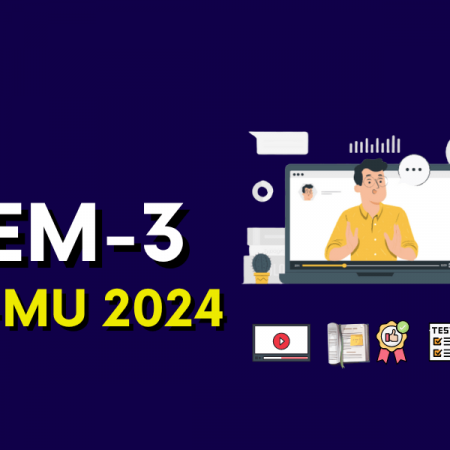Electronic Devices and Circuits [EDC]
Free

-
Index
- Numerical On Reverse Saturation Current
- Temperature &Ssa
- Mathematical Expression Of Diode Current
- Line Load Regulation
- Resistor
- Types of Resistors and its Fabrication Types
- Types of Inductors And Capacitors
- P-N Junction Diode
- Forward Bias and Reverse Bias of PN Junction
- Cb Configuration
- Zener Diode
- Zener Diode numerical Example
- Zener Diode as Voltage regulator
- Q Point Numerical
- Zener Diode and Its Application
- AC analysis of BJT Amplifiers
- CE Amplifier With Unbypassed RE
- Hybrid Pie Circuit With Early Effect
- Single staged RC coupled CE amplifier
- Small Signal Operation
Electronic Devices & Circuits EDC
Pre-requisite for the subject Electronic Devices & Circuits are as follows Engineering Physics-I, Engineering Physics-II , Basic Electrical Engineering Course Objectives for the subject Electronic Devices & Circuits are as follows To explain functionality different electronic devices. To perform DC and AC analysis of small signal amplifier circuits. To analyze frequency response of small signal amplifiers. To compare small signal and large signal amplifiers. To explain working of differential amplifiers and it’s applications in Operational Amplifiers Course Outcomes for the subject Electronic Devices & Circuits are as follows After successful completion of the course student will be able to Know functionality and applications of various electronic devices. Explain working of various electronics devices with the help of V-I characteristics. Derive expressions for performance parameters of BJT and MOSFET circuits. Evaluate performance of Electronic circuits (BJT and MOSFET based). Select appropriate circuit for given application. Design electronic circuit (BJT, MOSFET based) circuits for given specifications.
An amplifier, electronic amplifier or (informally) amp is an electronic device that can increase the power of a signal (a time-varying voltage or current). It is a two-port electronic circuit that uses electric power from a power supply to increase the amplitude of a signal applied to its input terminals, producing a proportionally greater amplitude signal at its output. The amount of amplification provided by an amplifier is measured by its gain: the ratio of output voltage, current, or power to input. An amplifier is a circuit that has a power gain greater than one. An amplifier can either be a separate piece of equipment or an electrical circuit contained within another device. Amplification is fundamental to modern electronics, and amplifiers are widely used in almost all electronic equipment. Amplifiers can be categorized in different ways. One is by the frequency of the electronic signal being amplified. For example, audio amplifiers amplify signals in the audio (sound) range of less than 20 kHz, RF amplifiers amplify frequencies in the radio frequency range between 20 kHz and 300 GHz, and servo amplifiers and instrumentation amplifiers may work with very low frequencies down to direct current. Amplifiers can also be categorized by their physical placement in the signal chain; a preamplifier may precede other signal processing stages, for example. The first practical electrical device which could amplify was the triode vacuum tube, invented in 1906 by Lee De Forest, which led to the first amplifiers around 1912. Today most amplifiers use transistors.
Module Introduction of Electronic Devices consist of the following subtopics Study of pn junction diode characteristics & diode current equation. Application of zener diode as a voltage regulator. Construction, working and characteristics of BJT, JFET, and EMOSFET. Module Biasing Circuits of BJTs and MOSFETs consist of the following subtopics Concept of DC load line, Q point and regions of operations, Analysis and design of biasing circuits for BJT (Fixed bias & Voltage divider Bias). DC load line and region of operation for MOSFETs. Analysis and design of biasing circuits for JFET (self bias and voltage divider bias), E-MOSFET (Drain to Gate bias & voltage divider bias).
Module Small Signal Amplifiers consist of the following subtopics Concept of AC load line and Amplification, Small signal analysis (Zi, Zo, Av and Ai) of CE amplifier using hybrid pi model. Small signal analysis (Zi, Zo, Av) of CS (for EMOSFET) amplifiers. Introduction to multistage amplifiers.(Concept, advantages & disadvantages).Module Frequency response of Small signal Amplifiers consist of the following subtopics Effects of coupling, bypass capacitors and parasitic capacitors on frequency response of single stage amplifier, Miller effect and Miller capacitance.High and low frequency analysis of CE amplifier. High and low frequency analysis of CS (E-MOSFET) amplifier.
Module Large Signal Amplifiers consist of the following subtopics Difference between small signal & large signal amplifiers. Classification and working of Power amplifier. Analysis of Class A power amplifier (Series fed and transformer coupled). Transformer less Amplifier: Class B power amplifier. Class AB output stage with diode biasing. Thermal considerations and heat sinks. Module Introduction to Differential Amplifiers consist of the following subtopics E-MOSFET Differential Amplifier, DC transfer characteristics, operation with common mode signal and differential mode signal. Differential and common mode gain, CMRR, differential and common mode Input impedance. Two transistor (E-MOSFET) constant current source.
Suggested Texts Books for the subject Electronic Devices & Circuits by Mumbai university are as follows D. A. Neamen, “Electronic Circuit Analysis and Design,” Tata McGraw Hill, 2ndEdition. 2. A. S. Sedra, K. C. Smith, and A. N. Chandorkar, “Microelectronic Circuits Theory and Applications,” International Version, OXFORD International Students, 6thEdition 3. Franco, Sergio. Design with operational amplifiers and analog integrated circuits. Vol. 1988. New York: McGraw-Hill, 2002. Suggested References Books for the subject by Mumbai university are as follows 1. Boylestad and Nashelesky, “Electronic Devices and Circuits Theory,” Pearson Education, 11th Edition. 2. A. K. Maini, “Electronic Devices and Circuits,” Wiley. 3. T. L. Floyd, “Electronic Devices,”Prentice Hall, 9th Edition, 2012. 4. S. Salivahanan, N. Suresh Kumar, “Electronic Devices and Circuits”, Tata Mc-Graw Hill, 3rd Edition 5. Bell, David A. Electronic devices and circuits. Prentice-Hall of India, 1999.
Prepare For Your Placements: https://lastmomenttuitions.com/courses/placement-preparation/
![]()
/ Youtube Channel: https://www.youtube.com/channel/UCGFNZxMqKLsqWERX_N2f08Q
Follow For Latest Updates, Study Tips & More Content!
Course Features
- Lectures 20
- Quizzes 0
- Duration 50 hours
- Skill level All levels
- Language English
- Students 464
- Certificate No
- Assessments Yes
-
Anuj pratap singh
5 star
Osm content as my point of view this type of effort they do its really great.



